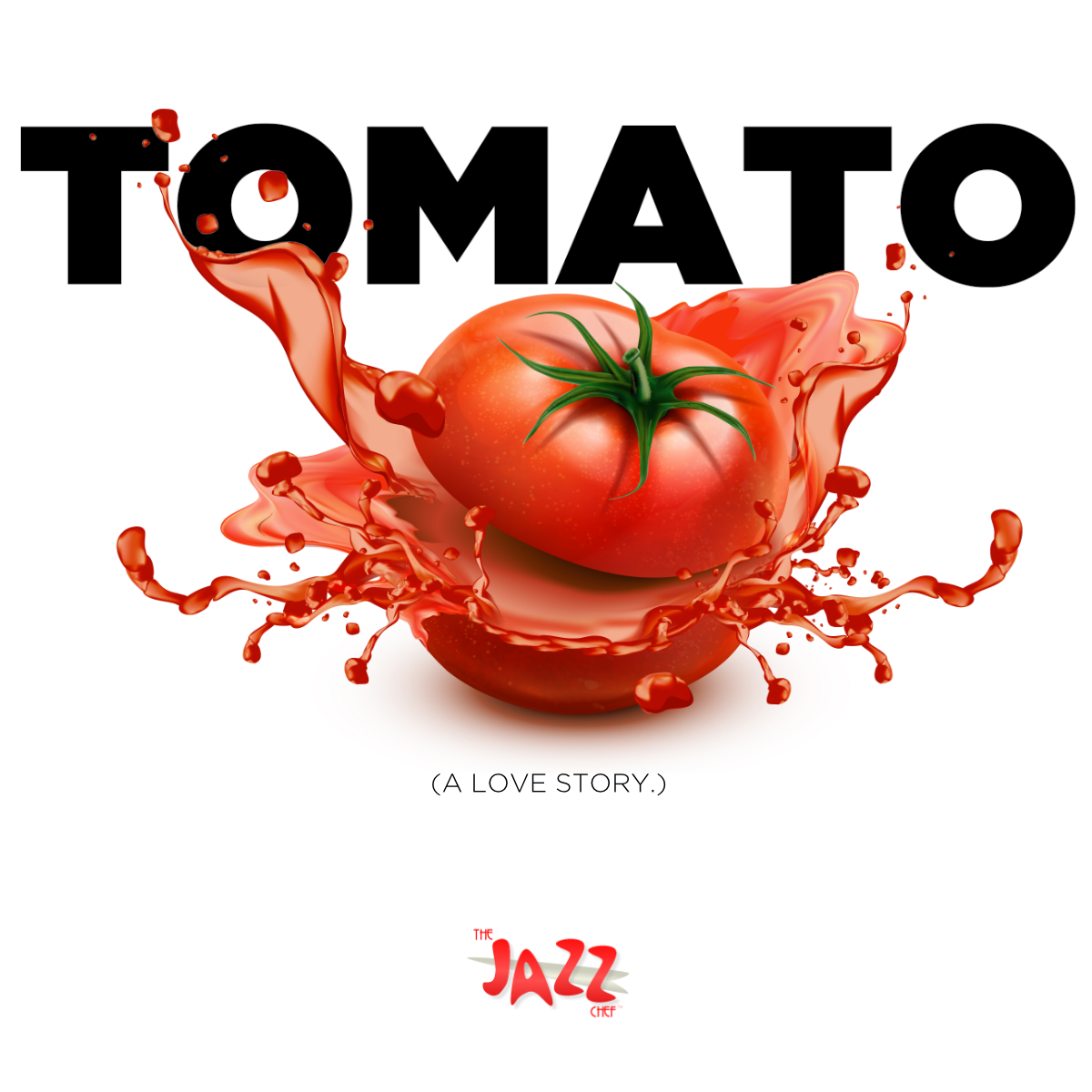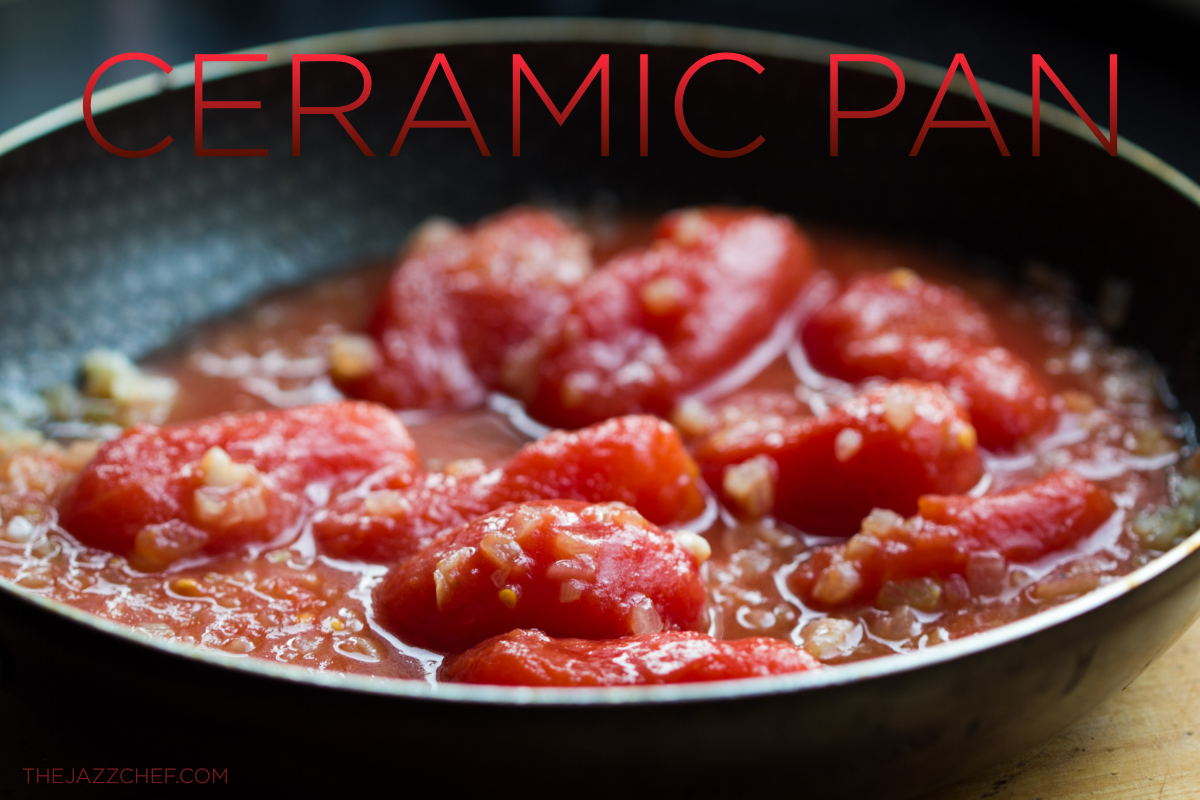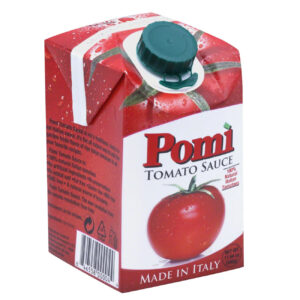The world L-O-V-E-S tomatoes!
Tomatoes Top Bananas
Tomatoes are the second most popular fruit in the world. Over 206.5 MILLION metric tonnes are consumed annually. Bananas are second, with 135 million metric tonnes.
With over 10,000 subspecies of tomatoes out there, from generations of cultivating new variants, changes in soil, weather, etc, there are fewer than 25 that are commercially cultivated, worldwide.
The fruit that became a legal vegetable.
There are a lot of trivia games that talk up the tomato tangle. Are tomatoes a fruit, or a vegetable?
It depends upon whom you ask.
Biologically
Tomatoes are a fruit, from a subspecies of nightshade plant. In truth, they’re more like berries, than, say, a plum.
Why?
They emerge from a single flower.

Legally
In the United States, tomatoes are legally defined, for commerce purposes, as a vegetable. The case made it all of the way to the Supreme Court of the United States.
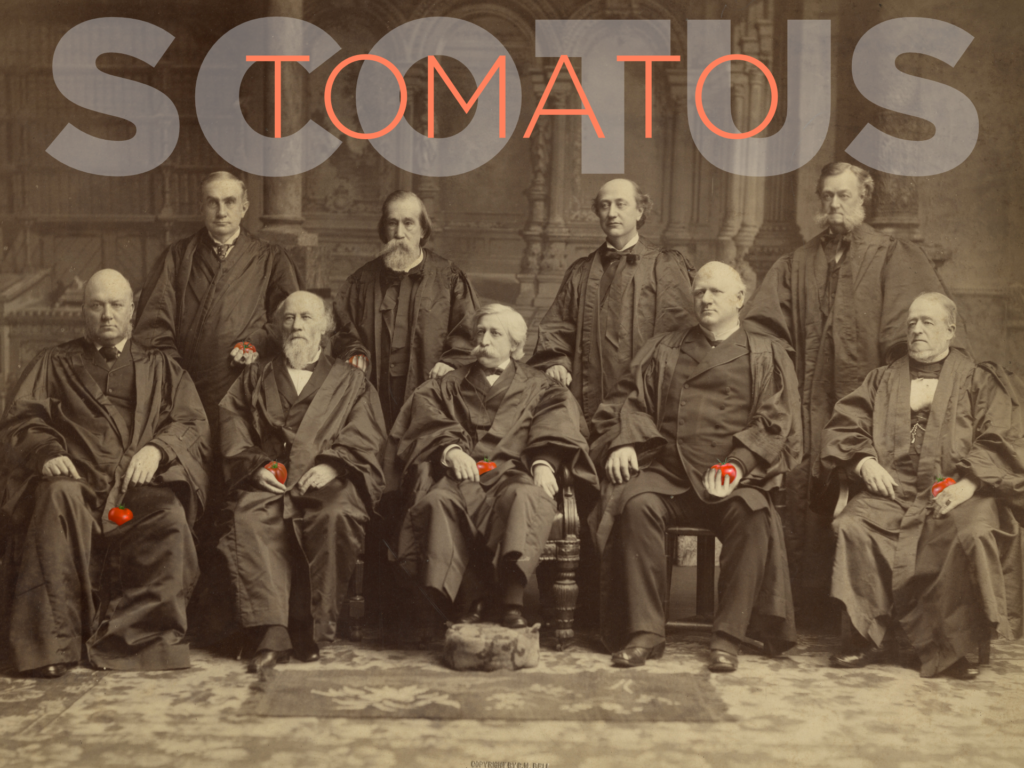
Hedden. Nix v. Hedden, 149 U.S. 304 (1893), is a decision by the Supreme Court of the United States in which the Court unanimously held that tomatoes should be classified as vegetables rather than fruits for purposes of tariffs, imports and customs.
Even though it has been adopted by Italy as a national food, they were late to the party there, making the scene in the 17th or 18th century.
The tomato, like the potato, and the eggplant, hails from Latin America, most likely Peru.
Their first major cultivation for human consumption was with the organized indigenous tribes of Latin America. The Spanish “discovered” them while conquering the Aztecs. The Nahuatl (Aztec) word xitomate became the Spanish ‘tomate.’ The English, to be different, changed from an “e” to an “o.”
The biggest shocker? Yes, tomato is a fruit, not a vegetable.
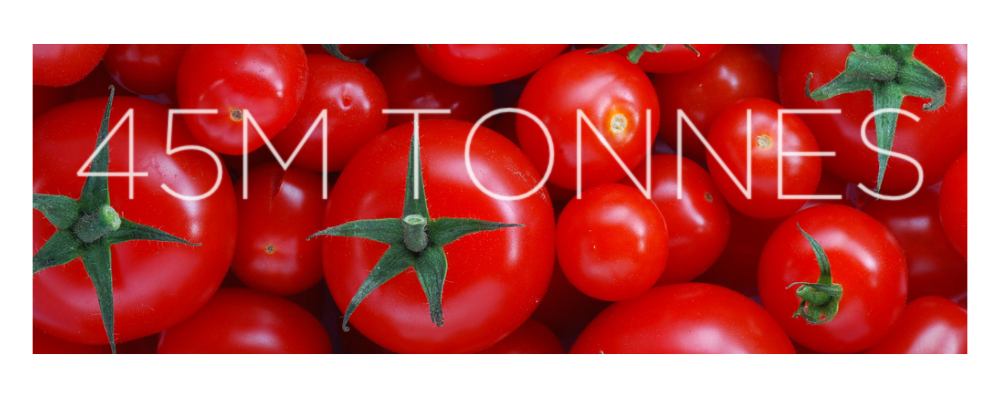
In fact, it is the only fruit in the world consumed by more than a billion people daily. Commercial tomato production is between 37 to 41M metric tonnes a year. As a commonly grown home planting world-wide, that number goes up to over 55M!
HEALTHY, IF PREPARED PROPERLY
Low in calories, the tomato can be an excellent source of dietary fiber, minerals, vitamins and antioxidants, if they are prepared properly.
Overcooking can easily remove every bit of goodness from them. That happens more often than you would think: Most of the world overcooks tomatoes, turning the fats and/or the tomato a bit toxic.
COOK, DON’T KILL
When you work with them, let your mantra be less is more when applying heat. Even sauces that call for long cooks can be kept fuller and richer by going low and slow, rather than using medium or high heat. With tomatoes, always trade time for temp!
Ceramic pans are great for preparing tomatoes. They deliver heat more efficiently, use less energy, and create a richer, fuller-bodied final product.
_________
Why is the tomato, above all other fruits and vegetables, so beloved?
IT’S THE CHEMISTRY, MAN
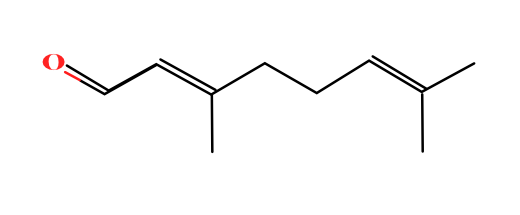
Tomatoes are globally popular because they are great flavor absorbers. They’re particularly good at channeling and blending strong aromas from savories like garlic, and onion, and the aromas of herbs.
What makes a tomato taste like, well, a tomato?
A tomato contains sugars, organic acids, free amino acids, and salts, along with about sixteen key volatile organic compounds that contribute to its flavor and aroma.
TOMATOES ARE WHAT THEY EAT
Soil and weather are another big part of their chemistry. Like peppers, where a tomato is grown can change the color, texture, and taste. Soils high in iron and other minerals can change the composition of the fruit. Wet years, dry years for conventional tomatoes can make a difference too.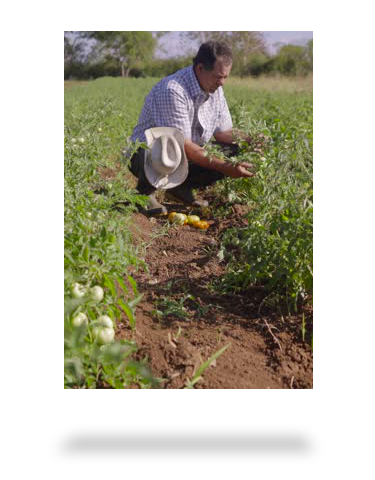
Researchers at Rutgers University in New Jersey found that sodium, potassium, and boron levels needed to be controlled to restore a “Jersey” tomato’s flavor after decades of breeding them into blandness for tougher skins, easy to harvest, and longer shelf life.
Location, location, location also influences the taste of a tomato. The soils of California and Italy are both very fertile, but they produce a different kind of tomato, even if they were both “Roma” varietals.
Tomatoes are grown year-round. What comes from California, and what comes from Chile, may be very different. Keep an eye on the labels, and know when your produce is changed up on you.
What else affects tomato taste?
CROP YIELD & TIME
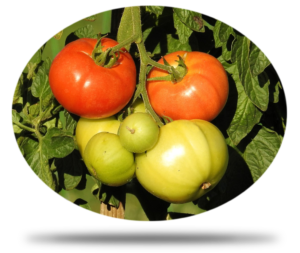 How many tomatoes grown on a vine makes a difference in how a tomato tastes. Many varieties of tomatoes are grown to maximize their yield. More fruit on the vine often comes at the sacrifice of the compounds that give tomatoes their taste. Every tomato has to share the same source of nutrition.
How many tomatoes grown on a vine makes a difference in how a tomato tastes. Many varieties of tomatoes are grown to maximize their yield. More fruit on the vine often comes at the sacrifice of the compounds that give tomatoes their taste. Every tomato has to share the same source of nutrition.
Time on the vine is also important. If you buy a tomato that was harvested fully ripened from a local farm or vendor, that fruit has had time to “bulk up” on the good stuff.
There is no real way, from the outside of the tomato, to tell if it was vine ripened. A good produce vendor might open one up, if you’re not sure, to show what’s under the hood. Most of the common table tomatoes should be red throughout.
LOTS O’THE GOOD STUFF
Tomatoes are just packed with all kinds of good things that humans need:
- Amino Acids. They give cells their structure. In the human body, they also play a key role in the transport and storage of nutrients. They influence the function of organs, glands, tendons and arteries. They’re also the thing that helps heal wounds and repair tissues, and they help your body haul off all kinds of waste deposits connected to your daily metabolism.
- Vitamin C. Foods rich in vitamin C helps the body develop resistance against infectious agents and scavenge harmful free radicals, as long as you don’t cook them into your tomatoes to start with.
- Potassium. It is an important component of cell and body fluids that helps control our heart rate and blood pressure caused by sodium and it’s a big part of the tomato.
- Vital B-complex vitamins such as folates, thiamin, niacin and riboflavin, as well some essential minerals like iron, calcium and manganese, are found in varying levels in the many species.
- Antioxidants protect against many cancers, as long as you don’t cook free-radicals back into your food.
- Lycopene. Double-blind studies have shown that lycopene lowers hypertension, and aids combatting prostate and skin cancers.
- Zea-xanthin. It can help you protect your eyes from age-related macular degeneration because it helps the body filter harmful ultraviolet rays.
REAL TOMATOES
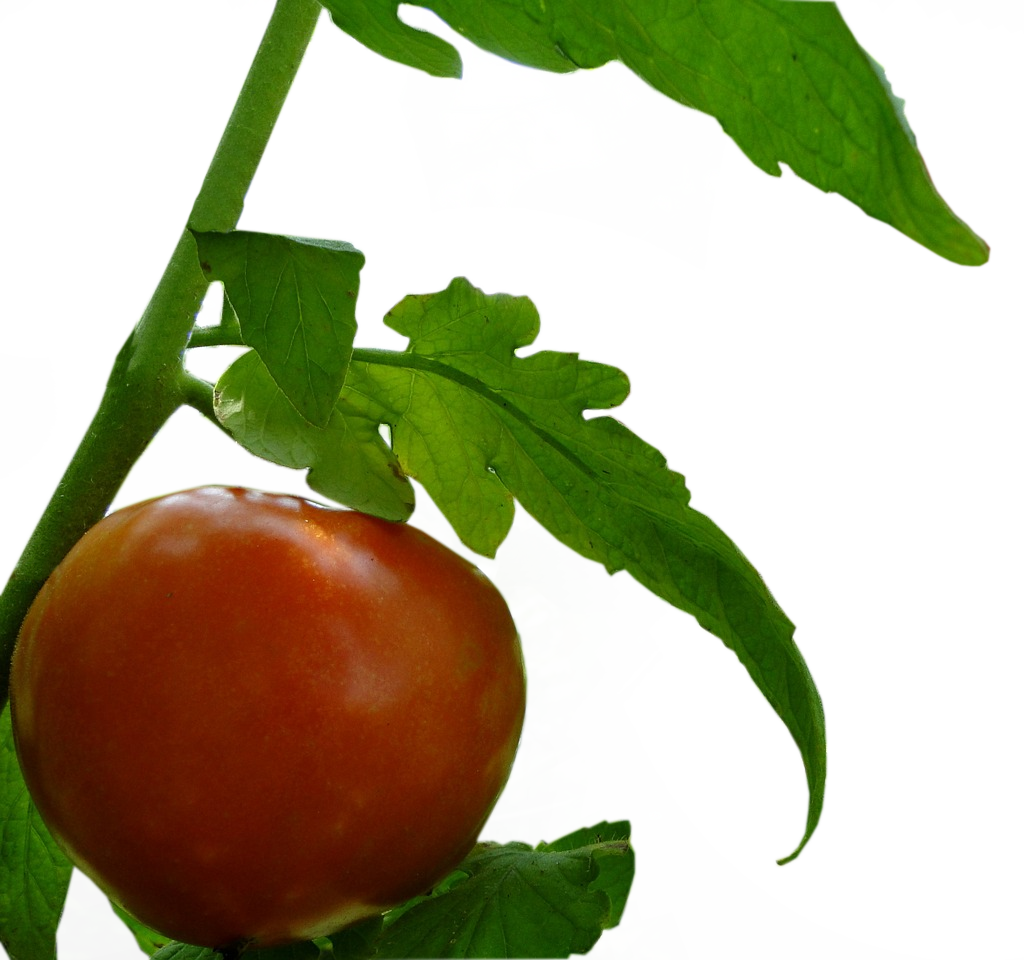 If you grow fresh, ripen your tomatoes on the vine until they’re super-red and they drop off easily. If you gotta tug-o, then they don’t go into your sugo.
If you grow fresh, ripen your tomatoes on the vine until they’re super-red and they drop off easily. If you gotta tug-o, then they don’t go into your sugo.
There are a lot of subspecies and hybrids of tomatoes out there. Different colors, and shapes are just the superficial level. How big their seed pods are, and how “meaty” they are vary widely, but that’s the key to figuring out how to use what tomato for what recipe/purpose.
The old saying, “you are what you eat,” applies double for tomatoes.
The soil type, or, if they’re grown hydroponically, the biochemical makeup of the natural nutrients they’re fed in water make some tomatoes stand out.
COMMERCIAL TOMATOES
The majority of tomatoes are grown commercially, for ketchup, sauces, pastes, and canning.
There have been a lot of hands in the breeding and crossbreeding of tomatoes, called hybrids, over time, but the University of California, Davis’ plant breeder, Jack Hanna, developed a blessing for the bulk biz that has been the bane of buyers at the retail level: A tough-skinned tomato that can be harvest by machines without being damaged, resists pests better, and ripens simultaneously.
These are usually picked at the peak of ripeness, cooked, canned or sauced within a few hours of leaving the field.
“SUPERMARKET” TOMATOES
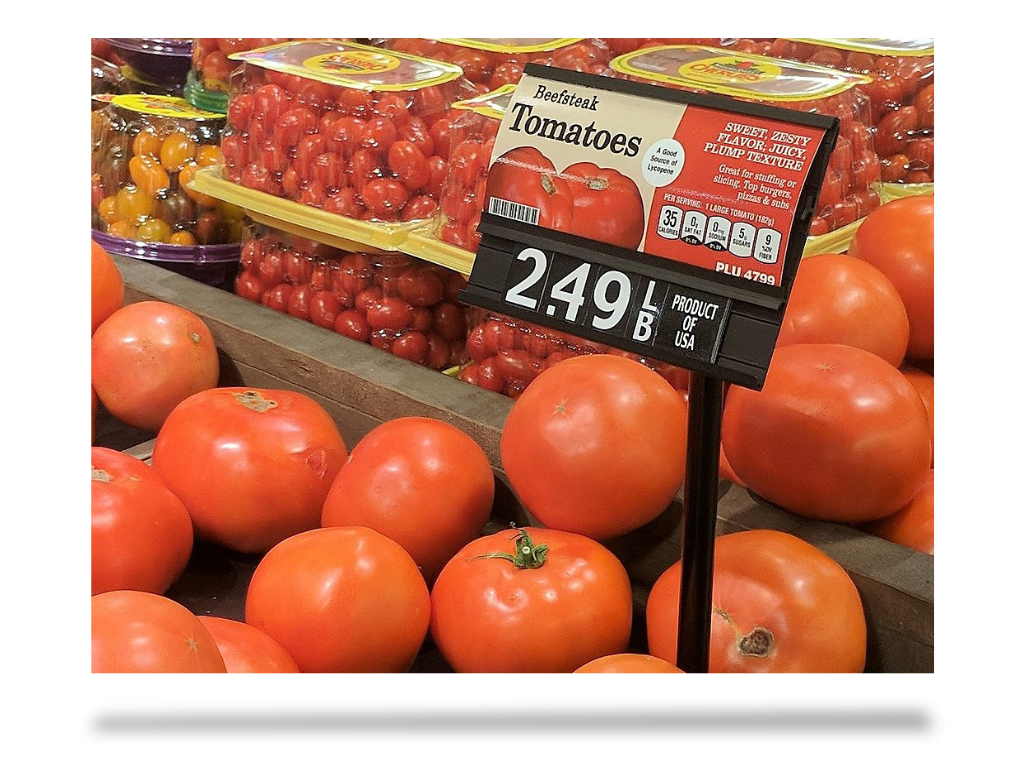 Fresh tomatoes, harvested for supermarkets in the Northern Hemisphere, of any type, are mostly crap. I won’t buy them.
Fresh tomatoes, harvested for supermarkets in the Northern Hemisphere, of any type, are mostly crap. I won’t buy them.
Like commercial tomatoes, they have been bred for shipping, not eating.
All that cross-breeding to make them tough and to last for weeks traveling to stores across the country or the world have caused them to lose both flavor, and some of the genetics that gave them big taste.
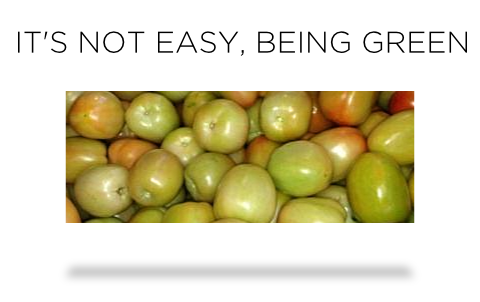 Tomatoes destined for your market are generally picked green or “pink,” well before they’re fully ripened on the vine, then refrigerated. It inhibits their maturation while they’re in transit. Refrigeration usually delays the maturation process, but if a tomato stays in low temp for too long, or at too low of a temperature, some of the volatile compounds that give it taste and smell are lost.
Tomatoes destined for your market are generally picked green or “pink,” well before they’re fully ripened on the vine, then refrigerated. It inhibits their maturation while they’re in transit. Refrigeration usually delays the maturation process, but if a tomato stays in low temp for too long, or at too low of a temperature, some of the volatile compounds that give it taste and smell are lost.
IT’S A GAS
Once they’re closer to their destination, supermarket tomatoes are gassed with ethylene. It’s a naturally occuring gas that decaying plant matter puts out that accelerates decomposition.
It occurs naturally on the vine. When one tomato starts to offgas, the others begin to ripen quickly as well. Growers halt that process because it reduces transit times from farm to table to a few days, or hours.
Tomatoes harvested commercially are quickly put into cold storage, or cold storage with products that absorb ethylene to slow down or stop their ripening. When they get to their delivery point, they’re gassed with one of several commercial chemical ethylene products, usually corn or natural gas based.
If they spend more than a week in transit, or in cold storage, they will still turn red, BUT, the volatile compounds that make a tomato smell and taste good can disappear in part, or in whole.
Picking them before their sugars and amino acids are at maximum can make the fibers in the tomato seem tough or “sandy.”
There is a bit of hope, though. Researchers at the University of Florida, in 2017, identified flavor-associated chemicals in 398 modern and heirloom tomatoes, as well as the genes that had been lost to cross-breeding for durability.
Through “molecular breeding,” identifying which species to cross-pollinate at the molecular level, scientists can learn, in the horrible hybrids, which actual tomatoes have a bit more of this and that that make them worthy to promote as breeding stock to bring the flavor back to conventional store tomatoes.
THE “VINE RIPENED” MYTH
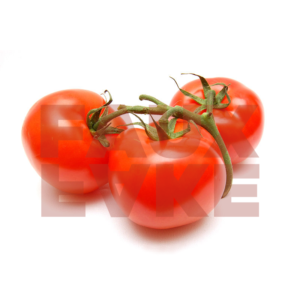
Most of the “vine ripened” supermarket tomatoes that are not hydroponic get away with a fib, like “natural” doesn’t always mean “real.”
More often grown indoors conventionally in hot hoses, they are picked, with their vines, before fully mature, a pale red-green, by clipping the vine with a few tomatoes. Most have to travel, and, of course, you’re buying the vine as part of the hype, so, while they may be a bit riper than the loose tomatoes in the bins, as they may get a few more hours or days on the vine to make the claim, they are also hit with ethylene gas closer to their point-of-delivery.
Really “vine ripened” tomatoes wouldn’t stick with the vines that they ship if they were as ripe as you want a fresh tomato. If you’ve ever raised your own, you know. When they’re very ripe, they pretty much drop off.
The hothouse improves growing conditions in terms of temperature and lower pesticide use, but there is one step further that is possibly the great red hope of the industry.
Now for the loaded question:
WHICH TOMATOES ARE BEST?
There are a few stand-outs in the ocean of tomato types out there. If you’ve tried one that I’m not familiar with, drop us a line or share on our facebook page.
SAN MARZANO FRESH OR CANNED
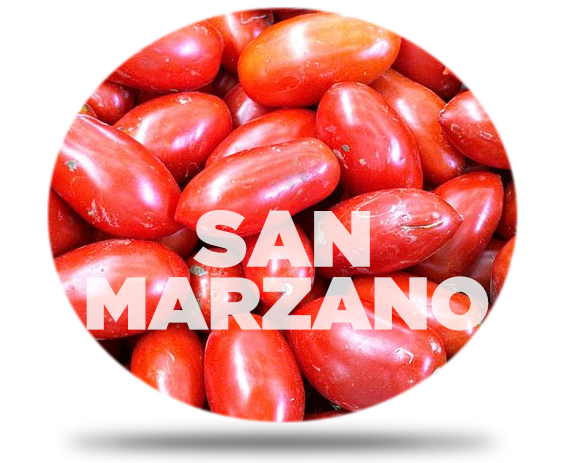 San Marzano is a variety of “plum” tomato. They come from the Campania region of Italy, which accounts for about 8% of Italian tomato production, but 90% of the high-end tomato biz.
San Marzano is a variety of “plum” tomato. They come from the Campania region of Italy, which accounts for about 8% of Italian tomato production, but 90% of the high-end tomato biz.
The volcanic soil of Campania imparts a richness of flavor that is hard to find in a lot of others. Their flesh is thicker than a Roma and they have fewer seeds. The taste is stronger, sweeter and less acidic. They are ideal for sauces of all kinds, especially marinara and pizza sauce.
These are some of the most highly-prized tomatoes in the world! This tomato, grown outside of Campania, just isn’t the same. Which launched a whole sub-industry in “fake” San Marzano tomatoes, and, sadly, a few Italian growers who cut corners and substitute in either thick sauce or other plum tomatoes along with a few San Marzanos. The Italian government stepped in, gave the San Marzano designation a “controlled” status, so it is easier for the authorities to intervene.
They have thin but very hearty, tough skins, and, if you’re in the EU and find them fresh, for most applications, peeling them before cooking with them will be a good thing.
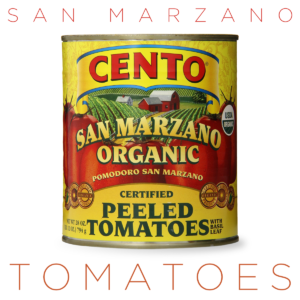 For the rest of us, we make do with the canned.
For the rest of us, we make do with the canned.
Cento’s Organic San Marzano tomatoes are my go-to for lots of dishes where their big flavor is needed, with as little waste as possible. They’re the only organic-certified fully San Marzano cans that I’ve found.
Remember, when you buy canned, that there is waste. Some of the tomato tops are hard. When you hand-crush tomatoes, you lose the top and stem core, the fibrous material that holds the seed pod together, and remove the odd partial peel or two. Typically 1/8th to 1/3 of a can, depending on the brand, can be lost to waste product. You use more cans than you think.
HYDROPONIC TOMATOES
Hydroponic tomatoes are often the most “ideal” fresh. They can grown locally year-round. The nutrients in the water can imitate any soil condition. The temperatures of greenhouses can be adjusted to reproduce just about any outdoor growing situation on Earth!
A tomato that is hydroponically grown LOCALLY, within a couple of hours of your store, is usually a great buy. They’re much more carefully produced. The science of maximizing the plant’s “diet,” eliminating pests through greenhousing, maximizing vertical growing, and running on a 24 hour growing clock results in a higher yield of tomatoes, year-round, that are far superior to the best in-ground grown, and can well outstrip “organic” certified tomatoes for nutrition and chemical-pesticide-free growing.
They cost a bit more, but they last longer, with that shorter trip to your door, and taste better.
You can also grow tomatoes hydroponically yourself, if you have an outdoor or indoor patio or even a large closet or part of the garage or basement where you can put up an LED grow light or two. Be prepared to trade or sell the excess. It gets to be a lot. We produced almost 300 lbs of cherry tomatoes in our far less manicured 6x8x12′ testing system outdoors!
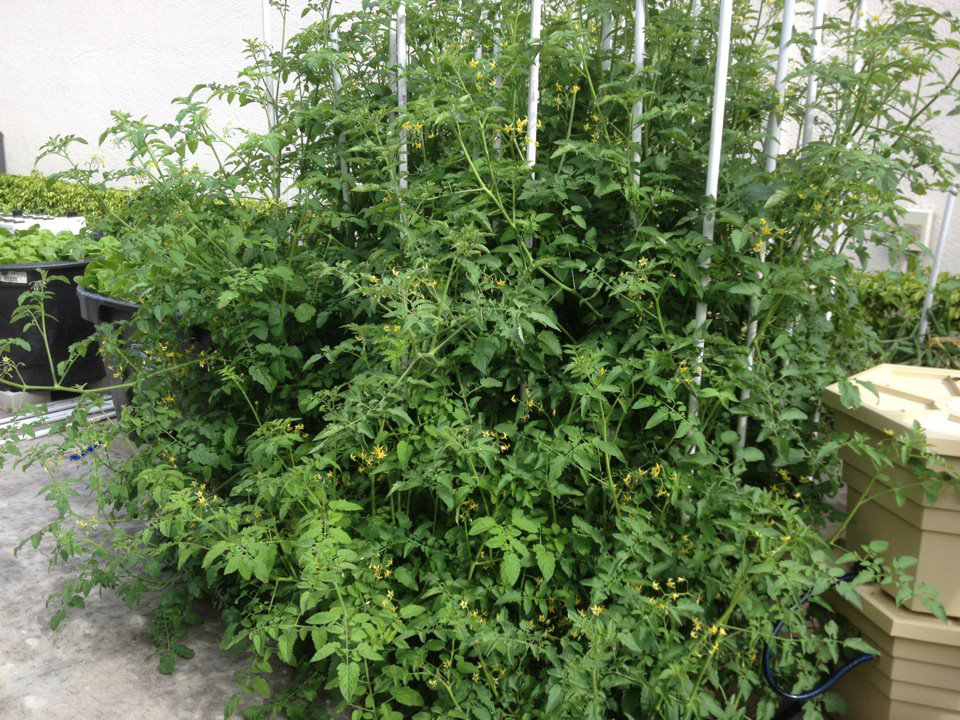
WHAT IS An ‘HEIRLOOM’ TOMATO?
Typically an ‘heirloom’ tomato are hand-cross-pollinated varietals of tomato that pre-date the mass-production, commercial tomato hybrids of the 1950s and beyond. They’re quite popular with the modern millennial, who seeks out “authenticity.”
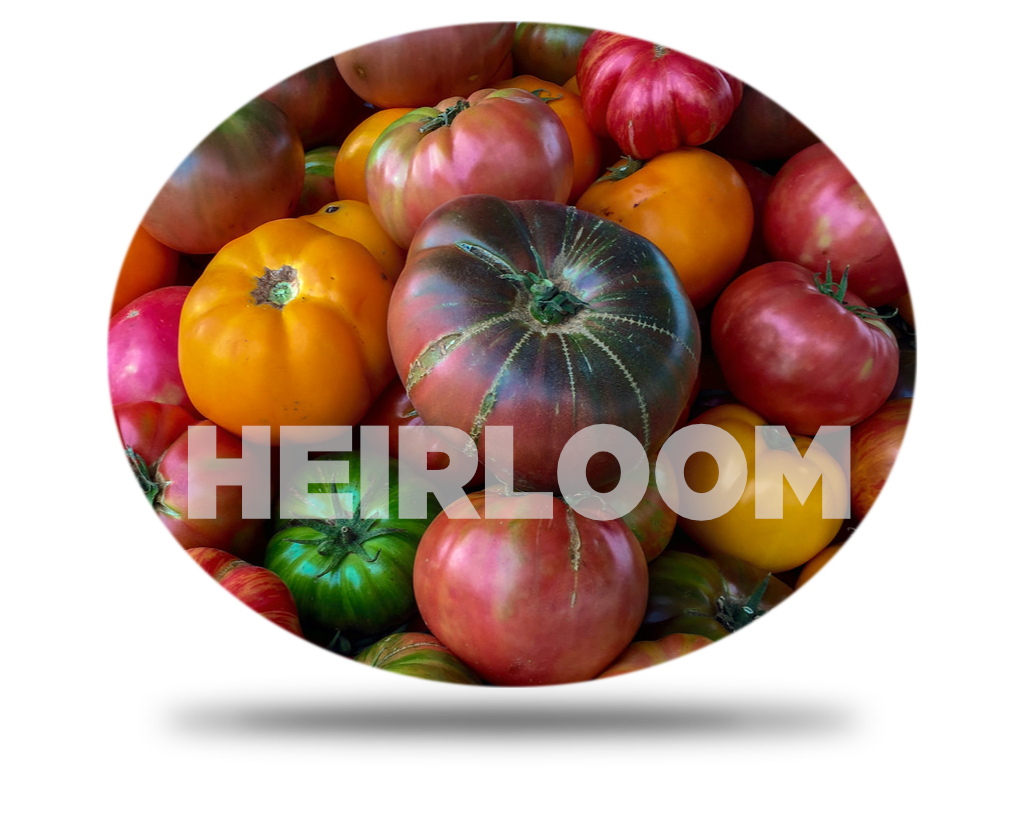 The whole heirloom thing is mostly branding hype, the fun thing of the moment to play with. They’re visually pretty, so they command big dollar in those clear plastic cases in which they’re entombed at the market.
The whole heirloom thing is mostly branding hype, the fun thing of the moment to play with. They’re visually pretty, so they command big dollar in those clear plastic cases in which they’re entombed at the market.
I’ve truly had some interesting, amazing, and also tough, and some really crappy heirloom tomatoes. Of the 10,000 tomato species out there, a lot of the obscure ones are just awful. Too tough. Too bitter.
Yellows are lower in lycopene, one of the great wins of a tomato. Fully ripe green heirlooms can have a higher content of the toxin solanine, found at times in nightshades like tomatoes, potatoes, and eggplants. They’re pretty, but I tend to avoid them for that reason.
Like all tomatoes, how they’re grown is more important. Maximal flavor is the thing. A chemical analysis of three of the same “heirloom” sub-species, grown in different soils or hydroponically will show you what I’m talking about. The sugar content, the mineral content, and volatile organic compounds all vary, based on what the plant is grown in.
The colors and other variations are visually appealing for a salad, or the odd dish or two, but they’re not a big win nutritionally or culinarily universally.
KNOW YOUR TOMATOES
We know (now) that all tomatoes are not created equal.
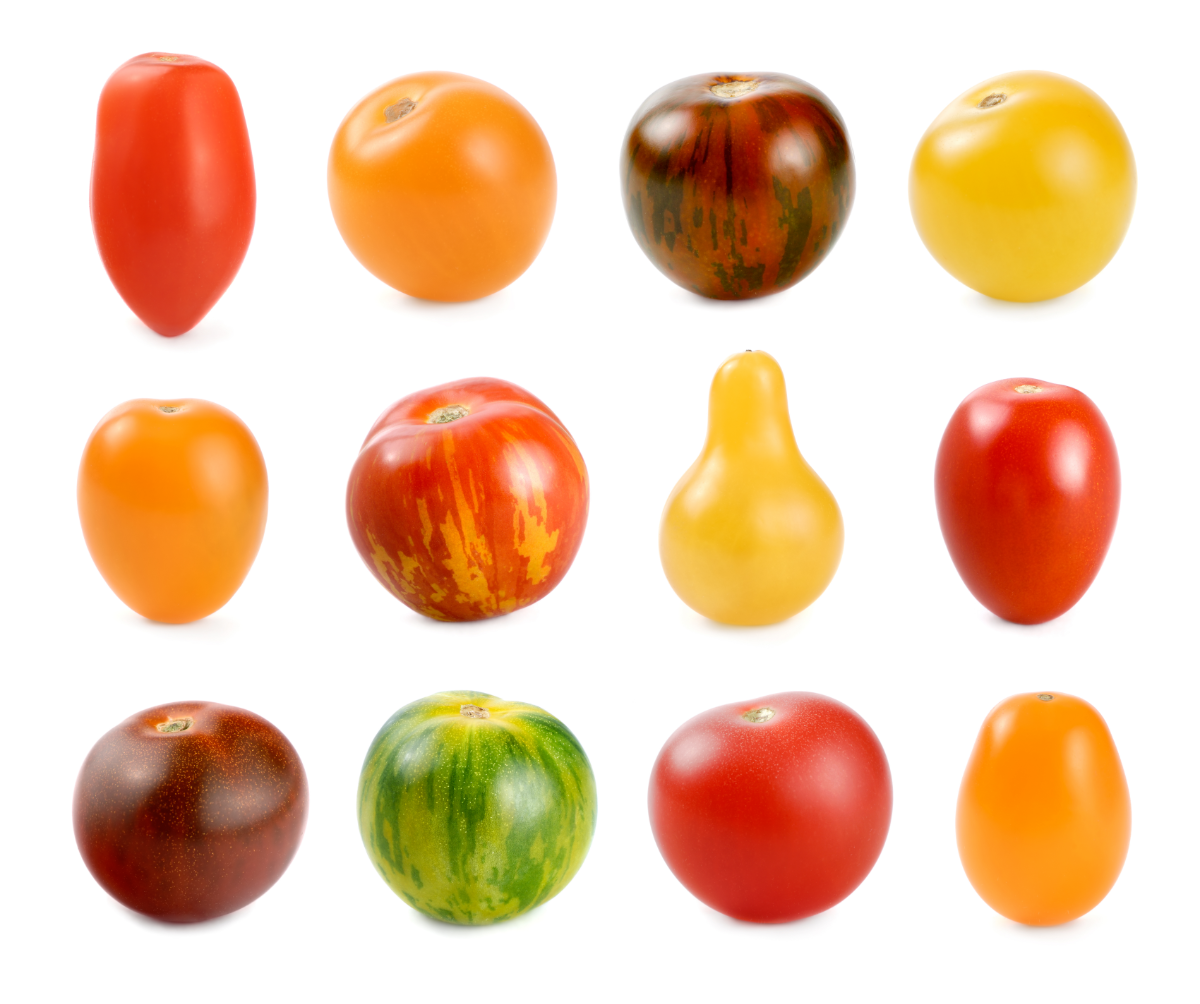 When you run to Ralph’s or Publix to grab a few things, you just assume, when picking up a particular type of tomato by varietal, a Roma, Kumato, grape or Beefsteak, that they’re all exactly the same.
When you run to Ralph’s or Publix to grab a few things, you just assume, when picking up a particular type of tomato by varietal, a Roma, Kumato, grape or Beefsteak, that they’re all exactly the same.
Now that we know that conditions in growing affect the taste, you also should make note of what is available, from different growers, even from season to season, and figure out which tomatoes make us look like great chefs, and which ones drag us down into lots of “corrections.”
YouR TOMATOES DIARY
Being a better chef is about your personal observations of everything that you use in the kitchen. When you buy tomatoes, do a taste test, and make some notes on your impressions. An iPad with a LifeProof or other waterproof, sealed case is wonderful thing in the kitchen. You can not only store a bunch of cookbooks searchable in seconds, but, with Evernote, you can store notes and photos of all kinds. Here’s a great place to put it to use!
- First, create a notebook for “Tomatoes” in your cooking notebooks.
- Write down the name of the tomato as it appears on the label, or where it’s from if you got it locally, or grew it yourself.
- Now cut it off a third. Is it mostly pulp and seeds, or is it meaty? Make notes.
- Cut the other thirds in half to get three samples.
- Take a small bite of one. Is it “dead on,” a balance of salty, sweet, and acidic? Is it too firm? Too soft? Meaty? Sandy? Make notes of your impressions. Is it rich and flavorful, or bland?
- If it’s perfect, you have a great tomato! Keep cooking. (Buy more!)
- If the texture is wrong, too hard or too sandy, you can band-aid it, but try not to buy them again. Go for thin-skinned, vine-ripened, quality canned, or GROW YOUR OWN.
- If it’s bland, it probably needs salt. Sprinkle a little across a third and take a bite. Adjust until it’s right. If it gets too salty, then that’s not your problem. Next step.
- If it’s bland and the salt helped, or didn’t, and oh, it’s still not quite right, take the unsalted third and sprinkle with dextrose, preferably, because it’s a better sweet, but you can also use any table sugar. Does it balance out?
- Maybe it’s too acidic? Slice off a THIN untested bit and sprinkle a LITTLE bit of baking soda over it by grinding a pinch between your fingers over the surface. Sodium bicarbonate is a base interacts with the tomato’s acid. It produces a bit of carbon dioxide (CO2) as it neutralizes, so wait about 1-3 minutes for the chemical interaction to finish. Try again. If it’s too acidic, you will need to lessen other acids in your recipe, like wine, vinegar, etc.
Based on your experiments, you know what you’ll have to do with your recipes that use those tomatoes to make specific adjustments for them. If I’m teaching away from home, and I have a bad supermarket tomato for a salads, sandwiches. Tomatoes are always a sensitivity point for a lot of your favorite eaters. Adjusting in advance can keep you from over-correcting in any dish.
DE-GRANDMA YOUR TOMATO RECIPES
Now that you know how to “adjust” a tomato, let’s look at some of your family favorite recipes.
Your mother, or your grandmother, definitely used a lot of tomatoes that we don’t have anymore. So it’s a good bet that great-grandma’s marinara from the old country probably used a tomato from before the 1960’s. The flavor of those tomatoes, and their physical makeup, was different.
When great-grandma came to America, she probably got a hold of a Jersey tomato, the most popular tomato cultivar from WWII through the 1960s. With a scowl at the acidity of her sugo, she might have put in a touch of sugar to correct it. She’d add the red wine, and the flavor improved, but the acidity soared. Not like “old country” tomatoes, which were lower in acidity, and needed the wine. A little more sugar.
If you have a very old recipe, try to find modern equivalents. A farm-raised local tomato picked at the last minute will be close. So will a canned San Marzano. You may also have to remove a few of the “fixes” that are in the recipe to adjust to what you cook with today.
COOK GENTLY
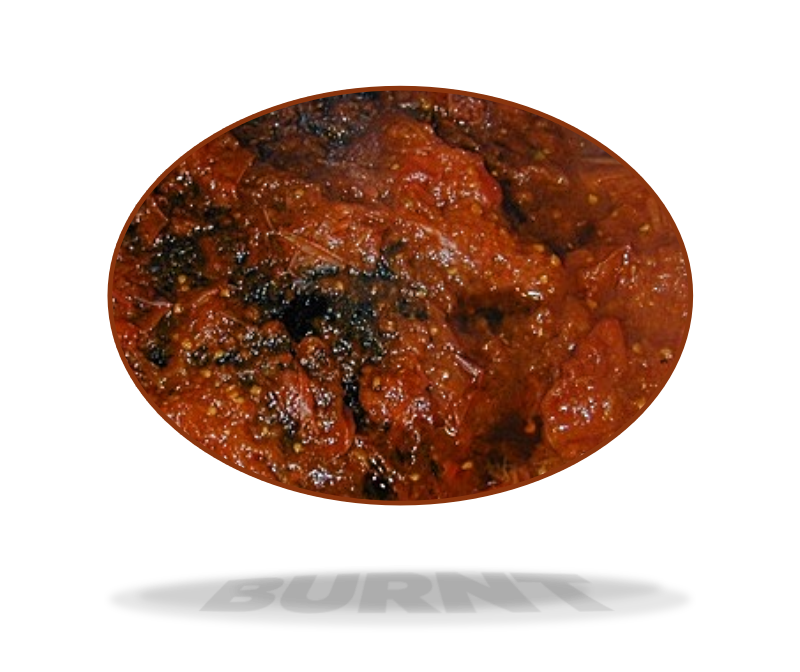 We abuse tomatoes, trading their sugars and their flavor absorption for their taste. The volatile compounds in the fruit that give it big flavor are very heat sensitive.
We abuse tomatoes, trading their sugars and their flavor absorption for their taste. The volatile compounds in the fruit that give it big flavor are very heat sensitive.
The longer that you cook a tomato, the more that it loses its antioxidant qualities, AND, oils that are overcooked tend to release free-radicals. If you use cheap cooking oils, loaded with hexane, that can cause additional negative health effects.
Tomatoes should be used toward the end of the cooking process. You’re just trying to warm them up, not kill them.
Tomatoes are almost always killed for a tomato soup. Either heat them slowly and gently in sous-vide, OR, tomatoes can be steamed in a metal steamer. Both are gentle and nutrient-saving methods. When they reach 160-180°F / 70-80° c, then transfer them to a blender or put them in a pot with an immersion blender and texturize them from coarse to pureé as your recipe calls for them to be.
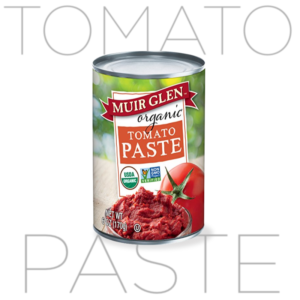 You can also pre-steam tomato halves before broiling the tops to get that “roasted” appeal and keep more of the nutrients.
You can also pre-steam tomato halves before broiling the tops to get that “roasted” appeal and keep more of the nutrients.
Tomatoes cooked in a sous vide are amazing. They emerge from the water bath in their vacuum sealed containers with their full nutrients and much of their volatile compounds in-tact!
Even when reheating canned, it is already cooked. You don’t need to spend hours cooking a marinara to integrate a bit of garlic, onion, and herbs into it.
Start with strained tomatoes, or tomato sauce that’s thicker, and reheat. Not thick enough? Tomato paste is the “flour” of the tomato sauce world. It sucks up moisture like a sponge. Add a little until you get to the consistency you need, rather than sweat your sauce into exhaustion.
HOW DO I FIND THE BEST TOMATOES LOCALLY?
- Canned/Boxed is AOK – For most applications, you don’t need fresh tomatoes. Organic or low-additive Italian-boxed tomatoes, picked at the peak of freshness, and processed within a few hours of coming off the vines, beat most of the “fresh” ones at the market that are handled poorly. POMÌ, Cento, and Muir Glen all make exceptionally good tomato products.
- Sourced Close. The closer to home that a tomato is grown, the more likely it is to be top-grade. Unless you live in California, Florida, or Southern Italy, encourage local and especially hydroponic farming in your area. Then you get year-round tomatoes shipped within hours of being picked!
- Farms – If we live close to farms, then the ones that vend a little of their ripest product close to us are the places to grab tomatoes from first.
- GROW YOUR OWN – Tomatoes are ridiculously easy plants to grow. A good LED grow light and a hydroponic tub with a little nutrient is a clean and easy way to produce a lot of what you need. Just keep it trimmed well. They grow fast!
- Farmers Markets. Don’t assume, because you’re buying tomatoes at an open public street market, even from a tent advertising itself that it is a “farm,” that they’re straight out of your local fields. A lot of these guys buy their produce at the same wholesalers that your market does. A street market seller should be straight with you about where they come from.
- “Natural” markets – Stores like Whole Foods do a bit better job of sourcing quality tomatoes, but, overall, they have the same shipping and volume consumption problems that most other big market chains have. That being said, WF is very very good at finding local suppliers of fresher produce, and they’re pretty up-front about where they source their stuff. For other markets, you have to ask the greengrocer who runs the department where they buy from.
THE CLOSER
The tomato love story goes on. The number of dishes made with them would seem to be almost infinite. At the Restaurant Am Steinplatz in Berlin, Germany, chef Markus Zimmer, recently acclaimed as the “Newcomer of the Year” by the Association of Berlin Master Chefs, created a dessert tomato recipe, with the tomato lightly candied and stuffed with pineapple and pistachio! The final frontier has been reached. Tomatoes know no bounds.
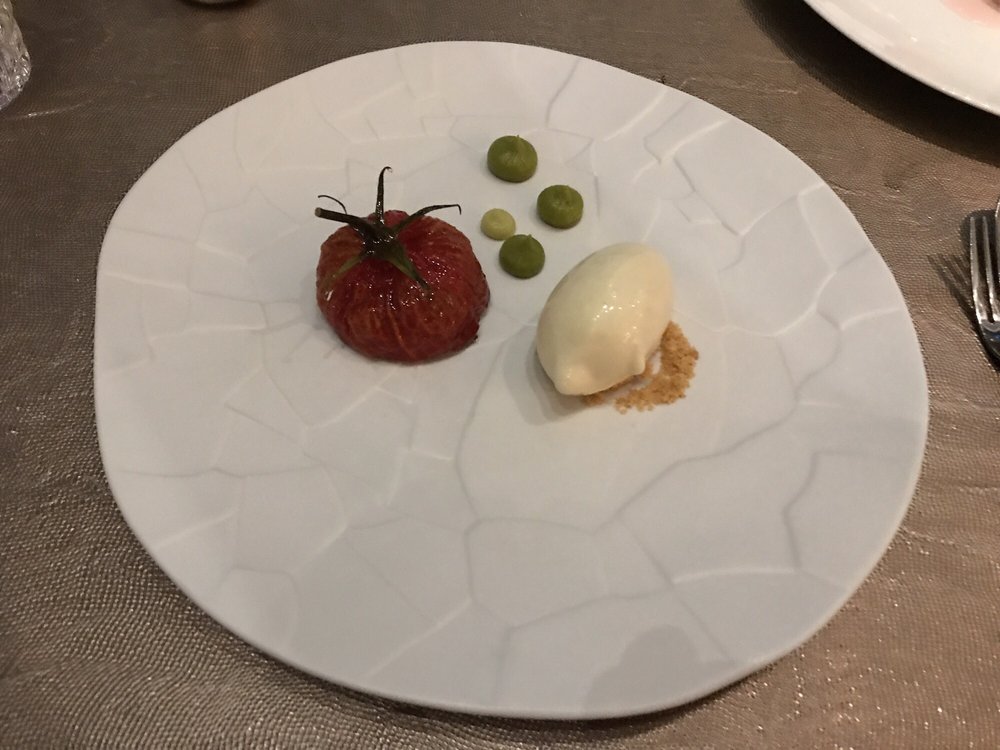
Whether you’re just making pizza sauce, or creating something truly unique like this, your success depends on using the best available product, and treating it with a little delicacy, love and respect in your kitchen.

